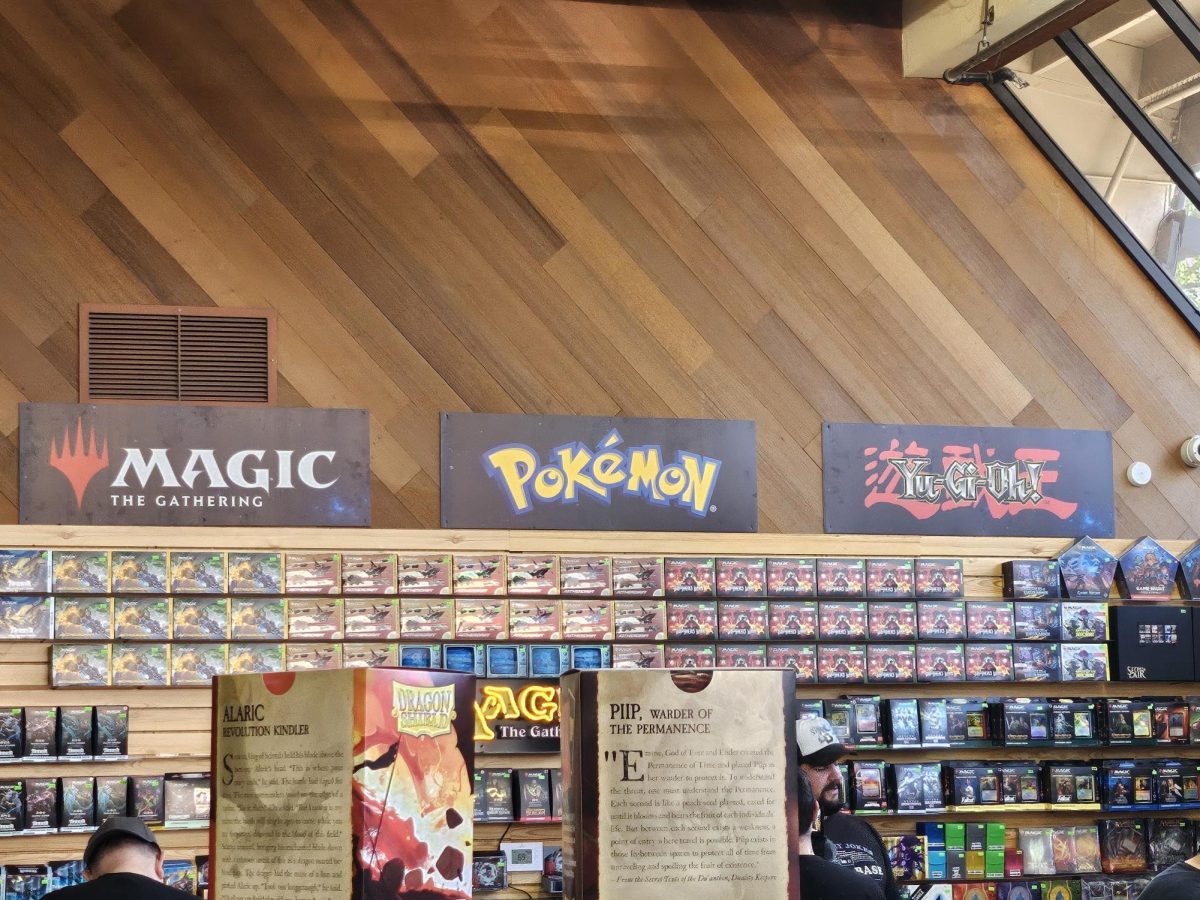Do you enjoy collecting? Do you have a competitive streak? Do you like chess, but wish it involved more dragons and robots? If you answered yes to any of these questions, trading card games may be right for you.
In these strategy-based games each player brings a deck of their own cards, with various properties based on combat principles, to play against one or more opponents. Building a personal deck can be as satisfying to one’s self-expression as actually playing the game. Simply collecting the cards is fun too.
Trading card games combine the fun of collecting with competitive games that require you to go out and meet other hobbyists, testing both your collection and game knowledge against them. A deck can feel like a custom car, to the point that making adjustments to it is often called “tuning” it. You pick cards that you like, either due to how they look, or how they perform, then you’re off to the tournaments. Maybe you test its performance in competitions, or maybe you just trade with others. The games are a mix of luck and strategy, that play very differently depending on what cards you and your opponent pick, so no two matches are ever the same.
Magic: the Gathering
Magic started it all in 1993, and is still the most popular card game even though dozens have sprouted since. It’s also the simplest to start with. It has more tournament formats than any other game, which in layman’s terms means there’s ways to play it that range from cheap to expensive, and from casual to competitive.
Magic used to be strictly themed after its one intellectual property, meaning you could expect knights, wizards and dragons on the cards. However, in recent years, and going forward, their parent company, Wizards of the Coast, has announced that 50% of their cards will be from other IPs, with everything from Marvel superheroes to Spongebob appearing in their product.
Games are themed as a duel between two wizards, where the cards are your spells, ranging from support to summoning creatures to do your bidding. It’s a mixture of luck and skill that has broad appeal, and tends to last about 15 minutes, which is low to average for a trading card game. Price varies wildly, from $20 for a full deck to thousands, depending on what format you play, though the average for the most popular tournament format is $300.
Pokemon
Pokemon was released in 1996, after the first “Pokemon” video games, “Pokemon Red and Green” came out to massive success in Japan earlier that year. Cards feature the creatures the series is famous for, and games are themed after the video game, where players are Pokemon trainers, leveling up their creatures to do battle, and evolving them into more powerful forms.
Pokemon relies more on luck than most card games. For some that’s a plus, because it means the games require less concentration. Others may lament that their performance can hinge on a literal coin toss. Pokemon is the least expensive game on this list, with a competitive deck costing around $60-$80. Pokemon is recommended to the less competitive, or to those who are just fans of the series and like collecting things.
Yu-Gi-Oh!
Yu-Gi-Oh! was released in 1999 and is based on a fictional card game from the ‘90s anime “Yu-Gi-Oh!,” called Duel Monsters.
Featuring everything from aliens to zebras, the theming is harder to pin down. On the plus side, this means there’s a deck for you no matter what you’re into. Yu-Gi-Oh! tends to be the quickest game on this list. With some games decided in the first two turns, they can be over in five minutes, although sometimes they can drag on for 30 depending on how they play out. While the others tend to have you slowly build your strategy to be able to play your most powerful cards, Yu-Gi-Oh! allows you to consistently play them on the first turn, so players come out of the gate swinging.
Yu-Gi-Oh! is not cheap. A tournament ready deck can currently range from 400-800$. Yu-Gi-Oh! is perfect for anyone who is a fan of the show, and for people who want fast competitive games.
Flesh and Blood
Flesh and Blood, the newest of the four by far, released in 2019. FaB is a game where players take on the role of warriors, and their cards are the attacks they use to bring each other down.
FaB is the most strategy and least luck based game on the list, because of the way it’s designed. This unfortunately means it is the most skill based, and least newbie friendly, as you should simply expect to lose to people who have been playing longer. But it could also mean it’s the most satisfying to progress with. Average price varies more than others. You can build decks for $100-200 that perform well, or spend hundreds more for cards that perform marginally better. This makes the game sound pay-to-win, but the math involved in its design is so tight, that you will still consistently lose to better players with cheaper cards. Realistically, if you want to build a competitive deck, you should be prepared to spend around $500. This game is geared toward more competitive people, who want an easy to learn, impossible to master game, akin to chess, but with ninjas.
To learn a game, find a local tournament. Players are often willing to show new people the ropes. Or you can find ways to play online with their own tutorials. All of these games save Flesh and Blood have video games which have excellent step-by step tutorials.
Regardless of which game you pick, what makes them shine is the social aspect. They’re a strategy game, but they’re also an excuse to go somewhere, meet new people and bond over a shared interest.






